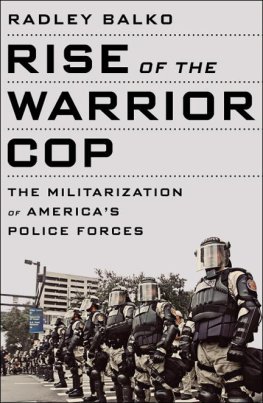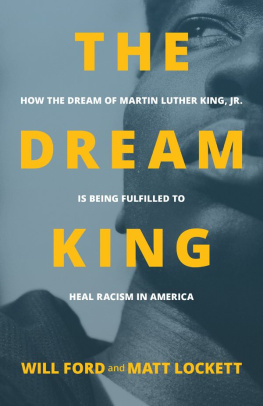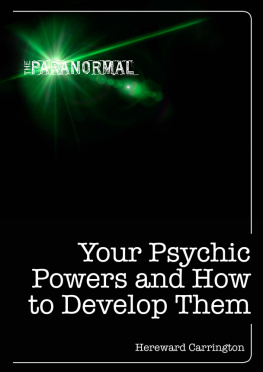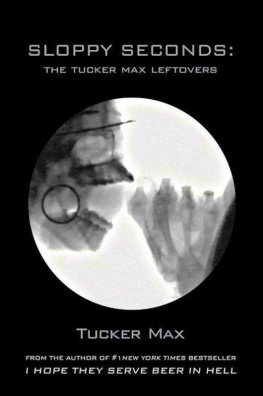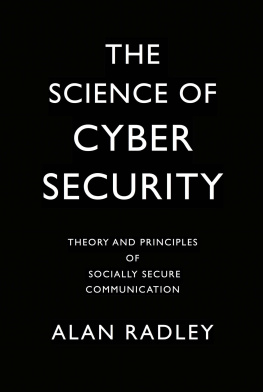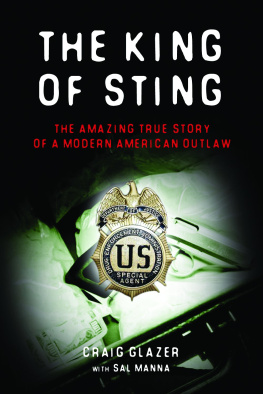Copyright 2018 by Radley Balko and Tucker Carrington.
Foreword John Grisham, 2018
Hachette Book Group supports the right to free expression and the value of copyright. The purpose of copyright is to encourage writers and artists to produce the creative works that enrich our culture.
The scanning, uploading, and distribution of this book without permission is a theft of the authors intellectual property. If you would like permission to use material from the book (other than for review purposes), please contact permissions@hbgusa.com. Thank you for your support of the authors rights.
PublicAffairs
Hachette Book Group
1290 Avenue of the Americas, New York, NY 10104
www.publicaffairsbooks.com
@Public_Affairs
First Edition: February 2018
Published by PublicAffairs, an imprint of Perseus Books, LLC, a subsidiary of Hachette Book Group, Inc. The PublicAffairs name and logo is a trademark of the Hachette Book Group.
The Hachette Speakers Bureau provides a wide range of authors for speaking events. To find out more, go to www.hachettespeakersbureau.com or call (866) 376-6591.
The publisher is not responsible for websites (or their content) that are not owned by the publisher.
The Library of Congress has cataloged the hardcover edition of this book as follows:
Names: Balko, Radley, author. | Carrington, Tucker (W. Tucker), author.
Title: The cadaver king and the country dentist : a true story of injustice in the American South / Radley Balko and Tucker Carrington.
Description: First edition. | New York : PublicAffairs, [2017] | Includes bibliographical references and index.
Identifiers: LCCN 2017009508 (print) | LCCN 2017011704 (ebook) | ISBN 9781610396929 (ebook) | ISBN 9781610396912 (hardcover)
Subjects: LCSH: Hayne, Steven (Forensic pathologist) | West, Michael (Dentist) | Criminal justice, Administration ofMississippi. | Judicial errorMississippi. | Brooks, Levon, 1959Trials, litigation, etc. | Brewer, KennedyTrials, litigation, etc. | Trials (Rape)Mississippi. | Trials (Murder)Mississippi.
Classification: LCC RA1025.H38 (ebook) | LCC RA1025.H38 B35 2017 (print) | DDC 614/.109762dc23
LC record available at https://lccn.loc.gov/2017009508
ISBNs: 978-1-61039-691-2 (hardcover); 978-1-61039-692-9 (e-book)
E3-20180130-JV-PC
To Kennedy Brewer and Levon Brooks, and to the memories of Courtney Smith and Christine Jackson
Shame may restrain what law does not prohibit.
Seneca
It is relatively easy to convict an innocent person. Millions of defendants are processed through our courts each year, so it becomes nearly impossible to determine how many are actually innocent once theyve been convicted. No one has the time or resources to examine the facts and backgrounds of those claiming to be wrongfully convicted. Actual wrongful conviction estimates range from 2 percent to 10 percent, but no one really knows. These numbers may sound low, but when applied to a prison population of 2.3 million, they become staggering. Can there really be between 46,000 and 230,000 innocent people locked away? Those of us who are involved in innocence work firmly believe so.
And, practically speaking, once an innocent person is convicted, it is virtually impossible to get them out of prison. I serve on the board of directors of the Innocence Project in New York. In the past twenty-five years, we have secured through DNA testing the release of 349 innocent men and women, 20 of whom had been sent to death row. All told, over 2,000 exonerations, including 200 from death row and including those not involving DNA, have occurred in the United States during that same period. While we are proud of our work, weve only scratched the surface.
Wrongful convictions happen for eight reasons. Not all are neatly defined, and they usually combine with others to produce a bad result. In some of the more egregious cases, the poor defendant unwittingly hit for the cycle and got nailed with all eight.
In no particular order of importance, they are:
Bad Police Work. Most cops are honest, hard-working professionals who arent paid a high salary. However, there are a not insignificant number of cases in which police officers have hidden, altered, or fabricated evidence, lied on the witness stand, cut deals with snitches in return for bogus testimony, intimidated and threatened witnesses, coerced confessions, or manipulated eyewitness identifications.
Prosecutorial Misconduct. Most prosecutors are honest, hard-working professionals who arent paid a high salaryat least not compared to many other lawyers. However, there have been cases in which prosecutors hid exculpatory evidence, encouraged witnesses to commit perjury, lied to jurors, judges, and defense lawyers, used the testimony of bogus experts, or ignored relevant evidence beneficial to the accused.
False Confessions. Most jurors find it impossible to believe that a suspect would confess to a serious crime he didnt commit. Yet the average citizen, if taken to a basement room and subjected to ten consecutive hours of abusive interrogation tactics by experienced cops, might be surprised at what they would say under extreme duress. Of the 330 people exonerated by DNA from 1989 to 2015, about 25 percent gave bogus confessions after lengthy interrogations. Virtually every one recanted soon after.
Faulty Eyewitness Identification. More often than not, those who witness violent acts have trouble accurately recalling the facts and identifying those involved. Yet police regularly use physical and photo lineups, and these are often manipulated in various ways to focus suspicion on favored suspects.
Jailhouse Snitches. This tactic involves one of the oldest and dirtiest tricks used by police and prosecutors. In every jail there is a career criminal staring at a long sentence. For leniency, he can be persuaded to lie to the jury and describe in great detail the confession overheard from the accused, usually a cell mate. And if he performs well enough on the stand, the authorities might allow him to walk free.
Bad Lawyering. Those accused of serious crimes rarely have money. Most are represented by good public defenders, but too many get stuck with court-appointed lawyers with little or no experience. Capital cases are complex, the stakes are enormous, and all too often the defense lawyers are in over their heads.
Sleeping Judges. Judges are supposed to be impartial referees intent on ensuring fair trials. They should exclude confessions that are inconsistent with the physical evidence and obtained by questionable means, exclude the testimony of career felons with dubious motives, require prosecutors to produce exculpatory evidence, and question the credentials and testimony of all experts outside the presence of the jury. Unfortunately, judges do not always do what they should. The reasons are many and varied, but the fact that many judgeships are elected positions doesnt help. They are conscious of their upcoming reelection and how the decisions they make might affect it. And of those judges who are appointed and not elected, the majority are former prosecutors.
Junk Science. This is a major reason for wrongful convictions. Over the past five decades, our courtrooms have been flooded with an avalanche of unreliable, even atrocious science. Experts of all varieties and with qualifications that were dubious at best and fraudulent at worst have peddled (for a fee, of course) all manner of damning theories of guilt based on their alleged scientific analysis of hair, fibers, bite marks, arson, boot prints, blood spatters, and ballistics. Of the 330 people exonerated by DNA tests from 1989 to 2015,



